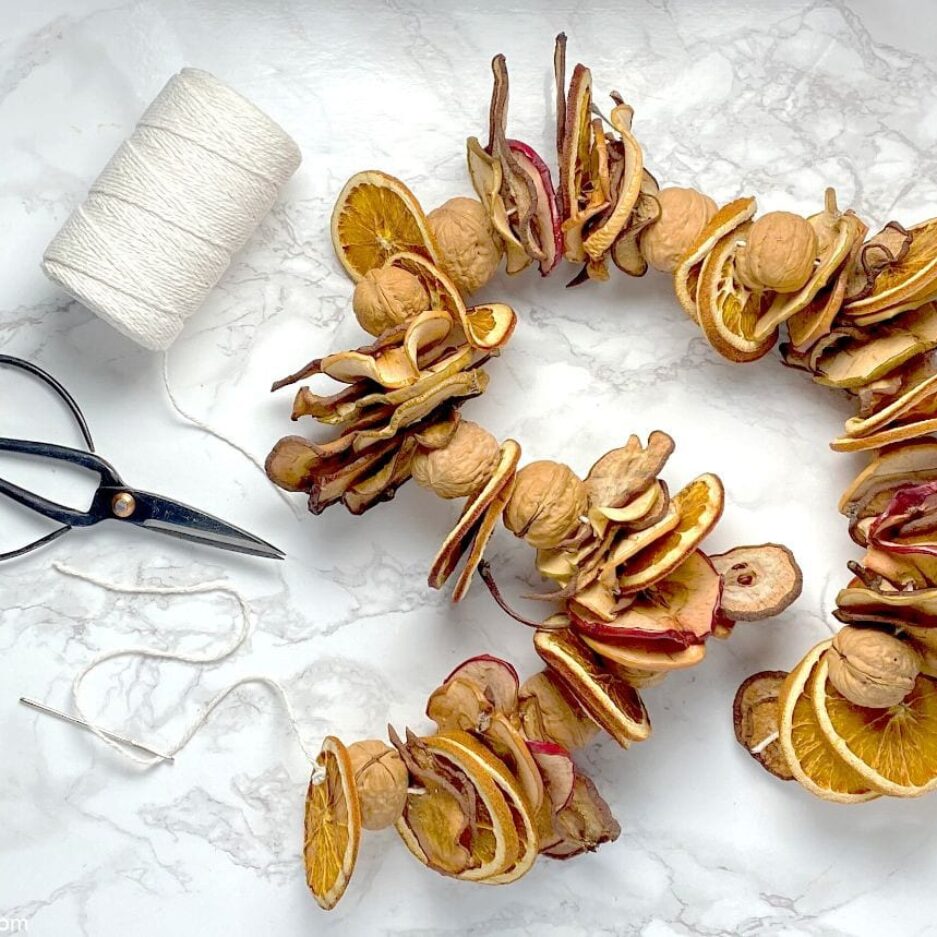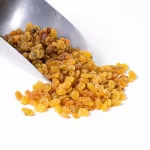Introduction to Drying Fruits at Home
The homemade dried fruit! Drying fruits at home is a simple, cost-effective way to preserve your favorite produce. By removing the moisture from fruits, you create delicious, lasting snacks full of concentrated flavor. It’s a natural method used for centuries to prolong the shelf life of food. Plus, homemade dried fruit has no added sugars or preservatives. This wholesome alternative to store-bought snacks is both healthy and satisfying.

Whether you use an oven, a dehydrator, or the sun’s warmth, drying fruit at home requires minimal equipment. It’s an activity that can involve the whole family. You can dry almost any fruit, and the result is not just tasty but also nutrient-dense. It’s perfect for snacking, cooking, or gifting.
In this guide, we’ll show you various methods to transform fresh fruit into dried delights. We’ll offer tips to ensure your dried fruit turns out great every time. Let’s dive into the world of drying fruits, starting with the best selection for drying, proper preparation, drying techniques, and storing methods to keep your dried fruits fresh and flavorful.
Selecting the Best Fruits for Drying
Before you start drying fruits at home, choosing the right type of fruit is key. High-quality, fresh fruits lead to the best-dried treats. Look for ripe, unblemished, and firm fruits for optimal drying results.
Criteria for Choosing Fruits
Here’s what to look for when selecting fruits:
- Ripeness: Fruits should be ripe but not overripe, as they contain the highest levels of natural sugars and flavors. Overripe fruits may result in a poor texture and can spoil more quickly.
- Firmness: Opt for firm fruits that can hold up well during the drying process. Soft fruits might become too mushy.
- Freshness: Choose the freshest fruits available for the most nutrients and best flavor after drying.
- No bruises: Bruised fruits can lead to inconsistent drying and potential spoilage spots.
Best Fruits for Drying
Some fruits dry better than others, here are a few top choices:
- Apples and Pears: Great for beginners due to their consistent texture.
- Bananas and Mangoes: Rich in natural sugars that intensify when dried.
- Berries: Berries tend to keep their shape and nutrients well.
- Stone fruits: Apricots, peaches, and plums turn into delightful chewy treats.
- Citrus fruits: Sliced thinly, citrus can be dried for a tangy addition to dishes.
Choose organic fruits when possible to avoid pesticides and chemicals. If organic options aren’t available, wash your fruits thoroughly before drying. With the right selection process, you’re set up for a successful fruit drying experience.
Preparing Your Fruit for Drying
Before you start drying your fruits, proper preparation is crucial. Here are the steps you should take to prepare your fruit for drying effectively, ensuring the best possible quality and taste in your homemade dried fruit.
Wash and Clean Your Fruit
Start by thoroughly washing your fruit to remove any dirt or pesticides. Use cool water and gently scrub the surfaces, especially if the fruit has a skin you’ll be eating.
Cutting and Slicing
After cleaning, slice your fruits evenly. This ensures they dry at the same rate. For thin-skinned fruits like apples and pears, thin slices work best. Stone fruits and citrus may need thicker slices due to their moisture content.
Pre-Treat to Prevent Browning
Certain fruits, like apples and bananas, may brown during drying. To prevent this, you can pre-treat them with a solution of lemon juice and water. Soak the slices briefly before drying.

Arrange on Drying Trays
Lay the prepared fruit slices in a single layer on drying trays. Make sure none of the pieces are overlapping or touching. This promotes even drying and prevents pieces from sticking together.
With these preparation steps complete, your fruit will be ready to dry using your chosen method, whether it’s in the oven, dehydrator, or sun. Proper preparation can make all the difference, leading to delicious homemade dried fruit that’s packed with flavor.
Methods of Drying Fruit at Home
Drying fruit at home can be done using various methods. Each technique offers unique benefits and requires different tools.
Oven Drying Technique
This method is ideal for those without specialized equipment. Preheat your oven to a low temperature, around 50-60 degrees Celsius. Prepare your fruit by slicing it uniformly to ensure even drying. Place the fruit slices on a baking tray lined with parchment for easy removal. Allow 6-12 hours for the fruit to dehydrate, turning occasionally.
Dehydrator Drying Method
Using a food dehydrator is more precise and energy-efficient for drying fruit. Set the dehydrator at about 55 degrees Celsius. Arrange the fruit slices on the dehydrator’s trays. It takes several hours, depending on the fruit type and slice thickness. No need to turn the fruit with this method.
Sun Drying Practice
Sun drying is the most natural method but depends on the climate. You need strong, direct sunlight and low humidity for best results. Place the fruit on screens or racks to allow airflow. Cover with a net to protect from insects. It may take several days to fully dehydrate the fruit.
Each method helps in producing delicious, homemade dried fruit. Choose one based on your equipment availability and climate conditions.
Tips for Perfectly Dried Fruit
Achieving perfectly dried fruit at home is simple with a few expert tips. These pointers will help you produce delicious, evenly dried fruits every time you preserve your favorite seasonal produce.
Select the Right Temperature
Always use the lowest possible heat to prevent cooking the fruit. For ovens, keep temperatures between 50-60 degrees Celsius. Dehydrators should be set around 55 degrees Celsius.
Monitor the Drying Process
Check your fruits regularly. Turn them if needed to ensure even drying, especially in an oven.
Keep Air Circulating
Whether using an oven, dehydrator, or sun drying, good airflow is key. It reduces drying time and helps avoid mold.
Be Patient
Drying fruit can take several hours to a few days. It’s slow but worth it for the quality of your snack.
Store Properly
After drying, let your fruit cool completely before storing. This helps prevent moisture from spoiling your batch.
Don’t Rush
Don’t try to speed up the process by increasing temperature. This can lead to partially dried fruit with a high risk of mold.
Use Parchment Paper
For oven drying, line trays with parchment to stop fruit from sticking and to make turning easier.
By following these tips, you’ll be well on your way to creating homemade dried fruit that is wonderfully flavorful and has a satisfying texture. Happy drying!
Storing Your Homemade Dried Fruit
Once you have finished dehydrating your fruit, proper storage is essential to maintain freshness and extend shelf life. Here’s how to store your homemade dried fruit correctly.
Use Airtight Containers
Choose containers that seal tightly to keep out moisture and air. Glass jars with rubber gaskets or plastic containers with secure lids work well.
Keep in a Cool, Dry Place
Your dried fruit should be stored in a cool, dark location. A pantry or cupboard away from heat sources is ideal.
Check for Moisture
Regularly inspect your stored dried fruit for any signs of moisture. If you notice dampness, remove the fruit and dry it out further.
Portion Control
For convenience, divide your dried fruit into single servings. This makes it easy to grab a healthy snack and keeps the rest sealed.
Label Dates
Always mark your containers with the date you dried the fruit. This helps you track freshness and quality over time.
Avoid Plastic Bags
Steer clear of using plastic zip bags, as they can trap moisture and lead to spoilage.
Consider Freezing
For very long-term storage, consider freezing your dried fruit. Ensure it’s fully dry and sealed in airtight containers before freezing.
By following these storage tips, your homemade dried fruit can remain delicious for months. Enjoy it as a nutritious snack anytime you like.
Creative Uses for Your Dried Fruit
Once you have mastered the art of drying fruits, the possibilities for using them creatively are endless. Here are some innovative ways to enjoy your homemade dried fruit:
Enhance Your Breakfast
Add dried fruit to your morning cereal, oatmeal, or yogurt for a burst of flavor and texture. It’s not only delicious but also increases the nutritional value of your breakfast.
Make Your Own Trail Mix
Combine your dried fruits with nuts, seeds, and a sprinkle of dark chocolate chips to make a healthy trail mix. It’s perfect for a quick snack on the go or while hiking.
Bake with Them
Incorporate dried fruits into your baking recipes. Use them in muffins, breads, or cookies. They add natural sweetness and a chewy texture to your baked goods.
Create Fruit Compotes
Simmer dried fruits in water with a touch of honey or maple syrup to make a fruit compote. Serve it over pancakes, waffles, or even ice cream for a delightful topping.
Prepare Healthy Desserts
You can make a range of healthy desserts with dried fruits. Try making energy balls by blending dried fruits with oats and nuts or whip up a fruit pudding.
Decorate Your Dishes
Use dried fruits to add a decorative touch to salads, desserts, and even savory dishes. Their vibrant colors and shapes can make any dish visually appealing.
By utilizing these creative uses, your homemade dried fruit can transform any meal or snack into something special, proving itself to be versatile in a variety of culinary contexts. Enjoy experimenting with different combinations and recipes to bring out the best in your dried fruit creations.
Health Benefits of Dried Fruit
When incorporating homemade dried fruit into your diet, you are not just enjoying a tasty treat, but also reaping multiple health benefits.
High in Nutrients
Homemade dried fruit retains much of the nutrition of fresh fruit. This includes vitamins, minerals, and fiber.
Antioxidant Properties
Many dried fruits are rich in antioxidants. These can help protect your body from damage by free radicals.
Natural Sugars for Energy
Dried fruits are high in natural sugars. They provide a quick energy source, making them an ideal snack.
Fiber for Digestive Health
The fiber in dried fruits can help maintain digestive health. It aids in preventing constipation and supports regular bowel movements.
Longer Satiety
Dried fruit can help you feel full longer. This can reduce the urge to snack, supporting weight management efforts.
Healthy Snacking Option
Selecting homemade dried fruit as a snack is healthier. It doesn’t have added sugars or preservatives, unlike many store-bought options.
Supports Overall Health
Eating dried fruit has been linked to an overall healthier diet. It can support immune function and reduce the risk of chronic diseases.
By choosing to make dried fruit at home, you’re opting for a healthful choice that not only pleases your palate but also benefits your well-being in various ways. Whether you’re looking for a nutrient boost, a healthier snack option, or simply trying to add more fiber to your diet, homemade dried fruit is an excellent and delicious choice.
DIY Dried Fruit Recipes
Once you’ve mastered the drying process, it’s time to enjoy the fruits of your labor with some homemade dried fruit recipes. These simple yet delicious recipes will help you take advantage of your dried fruit in various ways, creating treats that are both healthy and enjoyable. So, get ready to savor the sweetness of your own home-dried fruits with the following recipes.
Simple Oven-Dried Apple Chips
Apple chips are a crunchy, sweet snack that’s easy to make. Start with fresh apples and slice them thin. Preheat your oven to the lowest setting, around 50-60 degrees Celsius, and line a tray with parchment paper. Lay apple slices in a single layer and bake for 1-2 hours until crispy. Let them cool and enjoy as a nutritious snack.
Dehydrated Tropical Fruit Mix
A tropical mix is perfect for a flavorful snack. Use dried mangoes, pineapples, and bananas. Mix them together in a bowl and store them in an airtight container. Grab a handful when you need an energy boost or toss into your morning cereal for extra sweetness.
Berry Delicious Fruit Leather
Fruit leather is a hit with kids and adults. Puree mixed berries until smooth and spread onto a lined dehydrator tray. Set the dehydrator to 55 degrees Celsius and dry for 4-6 hours until it’s no longer sticky. Roll it up, cut into strips, and you have a healthy, portable snack.
These homemade dried fruit recipes not only offer healthier snack choices but also make use of simple ingredients without needing artificial additives or preservatives. Give them a try and discover the joy of creating your own dried fruit delicacies at home.



